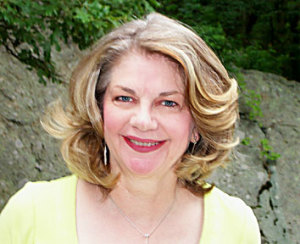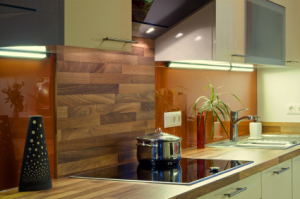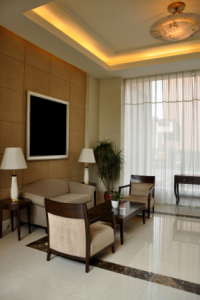Home Lighting

LED Lighting Expert, Pam Horner
Move over incandescent and CFLs. LEDs are finding their way into more and more residential applications. Pam Horner tells us what to look for and how to save energy (and money) with this emerging technology.
Q. How has LED technology evolved over the years?
A. LED technology has been around for 50 years, with the first use being in computers that controlled punch card readers. As the technology developed, it found uses in indicator lights in everything from automobiles to traffic lights. Today the technology has progressed beyond the pure individual colors (red, green, amber, blue) into blends that produce the “white light” we use every day to light our tasks and spaces. Efficiency has also dramatically increased over time, so LEDs are a very real option for replacing certain traditional light sources.
Q. What exactly are LEDs and how do they work?
A. A light-emitting diode (LED) is a type of semiconductor, which is a term we have all heard in the world of electronics. A semiconductor is basically a material that can—to some degree—conduct electrical current. Most semiconductors are fabricated using silicon crystals, and they are very small in size. LEDs are special in that additional materials are added to the crystal structure (in a process called “doping”), which ultimately creates visible light when electrical current is applied to the LED. The color of light depends on the materials chosen as well as the processes used in the fabrication of the LED package. LED technology is incorporated into many shapes, sizes, and configurations for today’s home lighting. One way to look at it is that LEDs can be purchased either as bulbs or as fixtures. In the bulb world, you will see nearly all of the familiar incandescent shapes, from standard A-line to reflector bulbs (R, PAR, and MR). You will also find the same, familiar bases so that they can typically fit into existing sockets—from medium and candelabra screw-based to pin-based. In the world of light fixtures (luminaires) you will also see many familiar styles with LEDs already integrated into them—styles such as recessed down lights, surface mounted glass fixtures, pendants, and task lights.
Q. What are the benefits to using LEDs over, say, CFLs, incandescent, etc.?
A. LEDs have many advantages, including:

- High brightness and intensity
- Higher efficiency than CFLs and much higher than incandescent or halogen
- Excellent resistance to shock and vibration
- Long life, with some products lasting up to 50 times the life of an incandescent
- Easy to dim
- Cool to the touch
- Excellent performance in cold temperatures
Q. If I’m a homeowner and I want to incorporate LED technology into my home, where are some good places to start?
A. LED technology is incorporated into bulbs or lighting fixtures for virtually any application in the home where traditional lighting technologies have been used. LEDs are now commonly used in table lamps for reading, recessed down lighting or under cabinet lighting in the kitchen, track lighting for artwork, chandeliers in the dining room, and outdoor post tops or coach lights.
Q. How can LEDs save energy and money?
A. LEDs save money in two ways—by saving energy and by lasting a long time. Obviously if a light source lasts a really long time, you don’t need to replace it as often, thereby saving money. However, the energy savings path to saving money with lighting is, perhaps, not quite as obvious. To clearly understand this relationship, you need to understand two terms—lumens and watts—and how they are related.
Simply put, the lumen is a measure of the total amount of useful light emitted from any light source. By “useful” we mean that our eyes can use it to see. A light source could be anything that produces light. For example, the sun produces about 7 octillion lumens, that’s a 7 with 27 zeros after it—a lot of light! A nightlight in your house produces about 14 lumens—a really small amount of light.
To put this into perspective for everyday lighting you might have in your home, the traditional 60-watt incandescent bulb produces about 800 – 900 lumens, while the 100-watt version produces about twice that, 1600 to 1700 lumens
 The lumen, as a measure of light, has been around for a little over 100 years. As a unit of measure, it has appeared on many light bulb packages for years, but in the consumer world, lumens have been overshadowed by another measure—watts, which typically appear in bigger print than any other information on the package. But watts aren’t the real measure of light. Watts tell you the amount of electric power used. It’s an electrical term, not a lighting term.
The lumen, as a measure of light, has been around for a little over 100 years. As a unit of measure, it has appeared on many light bulb packages for years, but in the consumer world, lumens have been overshadowed by another measure—watts, which typically appear in bigger print than any other information on the package. But watts aren’t the real measure of light. Watts tell you the amount of electric power used. It’s an electrical term, not a lighting term.
To save energy with lighting, the idea is to get more lumens out of every watt. If you know the lumens (which you do, because they are on the package) and you know the watts (also on the package), you can divide the lumens by the watts and—voila!—you have lumens per watt, or LPW. The higher the number, the better the light source is at converting electrical power into light. You might say that LPW is the “miles per gallon” of lighting. So, assuming you keep the light levels in your home about the same, you can switch out your older light sources with newer, more efficient ones, like LEDs, that have high lumens per watt, and your electric bill for lighting will be lower.
Q. But what about the initial upfront cost of LED lighting?
A. Over 80% of the cost of operating a light bulb or fixture is the cost of electricity. As explained above, by getting more lumens per watt with LEDs, your energy savings easily recoup the upfront cost before the end of bulb life.
Q. What should consumers look for when purchasing LEDs?
A. Many lighting technologies are now in the market together. With all of these new technologies on the shelf side by side, you can no longer use watts as your indicator for light output (as explained earlier). It won’t work. And you no longer have just one choice—you have many choices. If you are going to compare several bulbs to replace, say, an incandescent or halogen bulb, here are some hints:
- Compare the colors. Most packaging will show how “warm” or “cool” a bulb is in appearance, with warm appearing yellower to the eye and cool appearing bluer, relatively speaking. If a warm color is desired (similar to incandescent or halogen), then look for words like “warm” or “soft white.” Also look for numbers like 2700K or 3000K, also indicating a warmer appearance.
- Compare the lumens and the watts. More lumens for the watt is your ticket to energy savings. So, for example, using 800 lumens as a target light output for one bulb, here are several different choices and technologies that produce those 800 lumens today:
- A 60-watt standard incandescent bulb
- A 42-watt halogen bulb
- A 13-watt compact fluorescent bulb
- A 10-watt LED bulb
- Compare the shapes. If you want the same effect that you had before, select a similar shape, and also make sure it will physically fit into your fixture.
- Compare the bases. Make sure the bases are the same as the one you are replacing.
- Check out the dimming capability. If your old bulb was controlled by a dimmer, and you decide to choose an LED replacement, then the LED needs to be dimmable. Not all of them are, so look carefully at the label. Also check to see if the manufacturer lists the types of dimmers that will work with the LED bulb.
About Pam Horner
Pam Horner holds a B.S. degree in English from Iowa State University and M.S. in Lighting from Rensselaer Polytechnic Institute. She began her lighting career in 1975 as owner of a manufacturers’ representative agency, focusing on specification sales of luminaires and dimming systems. For several years, Horner managed the Outreach Education program for the Lighting Research Center in Troy, NY. In 1996, she joined OSRAM SYLVANIA as Manager of Lighting Education. Until her recent retirement, she served as their Senior Director of Government and Industry Relations, managing numerous lighting industry partnerships and working with trade and professional societies to shape lighting policies. Horner is a long-time member of the Illuminating Engineering Society, serving as its President from 2001-2002.